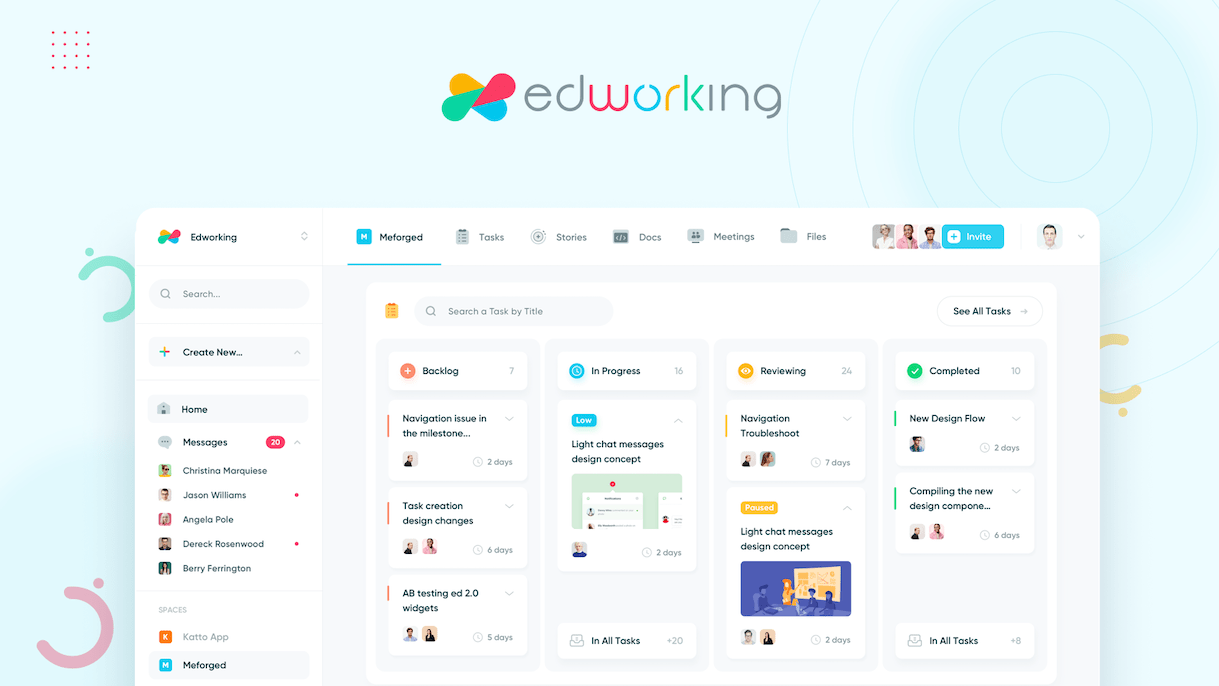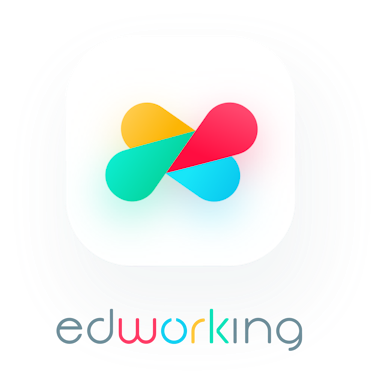Setting goals in business isn’t just about wishful thinking or jotting down a to-do list. It’s about creating a structured path that leads your team toward tangible outcomes. That’s where goal-setting frameworks come into play—they turn vague aspirations into clear, actionable plans.
Two of the most popular goal-setting methods out there are OKRs (Objectives and Key Results) and SMART Goals (Specific, Measurable, Achievable, Relevant, and Time-bound). Each offers a different approach to defining success, and depending on your business’s needs, one might suit you better than the other.

So, which one should your business use? Are OKRs just a trend, or are they more effective than the tried-and-true SMART format? This article dives deep into both frameworks, comparing their strengths, weaknesses, and ideal use cases to help you choose the one that will move your company forward.
Let’s explore how structured goal-setting can transform the way your business grows and performs—one measurable milestone at a time.
 Understanding goal-setting frameworks in business
Understanding goal-setting frameworks in business
What are goal-setting frameworks?
A goal-setting framework is more than just a system for writing down goals. It’s a strategic method used to define, align, and track objectives across teams or entire organizations. At their core, these frameworks ensure that everyone is working toward the same vision—no matter their role or department.
Goal-setting frameworks are designed to create clarity. They break down lofty ideas into manageable chunks, give direction to daily work, and set a baseline for performance. Think of them as the bridge between a company’s mission and the actual tasks completed by its people.
Why businesses need structured goal-setting
It’s easy to underestimate the power of structure when setting goals. But the truth is, without a solid framework, goals can quickly become confusing, unmeasurable, or worse—irrelevant. Structured goal-setting helps eliminate ambiguity, boosts motivation, and ensures accountability at every level.
Real-world consequences of vague goals vs. structured objectives
Imagine a sales manager telling their team, “Let’s try to sell more this quarter.” Compare that to: “Increase monthly subscription revenue by 15% by the end of Q2 through upselling existing customers.” The second goal is focused, measurable, and trackable—exactly what good frameworks aim to achieve.
Here are some of the most important benefits of using a goal-setting framework in your business:
- Provides crystal-clear direction and purpose
- Aligns team efforts with company priorities
- Encourages measurable outcomes and accountability
- Boosts employee engagement by clarifying expectations
- Supports strategic planning and performance reviews
It’s not just about what you want to achieve—it’s about how clearly you define that path and how well your team can follow it.
 SMART goals: specific, measurable, achievable, relevant, time-bound
SMART goals: specific, measurable, achievable, relevant, time-bound

Breakdown of the SMART acronym
SMART is a classic goal-setting framework that’s been around for decades—and for good reason. It offers a simple yet powerful structure that applies to almost any business context.
Let’s break down what each letter stands for:
- Specific – Goals need to be clearly defined. “Increase website traffic” is vague, but “Increase website traffic by 20% through SEO optimization” leaves no room for confusion.
- Measurable – If you can’t measure it, how will you know you’ve achieved it? Metrics provide checkpoints and motivation.
- Achievable – Ambition is great, but goals also need to be realistic. Overstretching can lead to burnout and disappointment.
- Relevant – Goals should align with broader company objectives. This avoids busywork and focuses energy where it matters most.
- Time-bound – Deadlines drive urgency and help prevent procrastination. Without one, goals risk floating indefinitely.
It’s like giving your team a GPS instead of a treasure map—they always know where they’re going and how far they’ve come.
When to use SMART goals in business
SMART goals shine in tactical settings where you need to manage short-term tasks or individual performance. They’re especially useful for defining clear expectations and evaluating results.
Examples for project management, employee performance, and task planning
- For project teams: “Complete the onboarding automation project by July 30th, reducing manual work by 40%.”
- For employees: “Attend 3 leadership training sessions by the end of the quarter and apply the concepts in team meetings.”
- For marketing: “Grow Instagram followers by 10% through three weekly reels and one collaboration post per month.”
Because SMART goals are so structured, they work well in established organizations or any setting where stability and precision matter. They leave little room for ambiguity—and that’s a good thing when accountability is key.
 OKRs: objectives and key results
OKRs: objectives and key results

What makes OKRs powerful
OKRs are a favorite among innovative companies like Google and Netflix for a reason—they combine clarity with ambition. The framework is simple: you set an Objective (what you want to achieve), and then list Key Results (how you’ll measure success).
What sets OKRs apart is their boldness. Objectives are often meant to stretch teams beyond their comfort zones. The goal isn’t just to complete a task—it’s to aim higher and think bigger.
OKRs work best when:
- You want to encourage growth over perfection
- Your team thrives on measurable progress
- You’re aligning efforts across multiple departments
They’re also designed to be transparent. Everyone in the organization can see each other’s OKRs, which fosters alignment and a sense of shared purpose.
When OKRs outperform other frameworks
One of the biggest advantages of OKRs is their flexibility. They’re not tied to specific tasks but instead focus on outcomes. This makes them perfect for fast-moving teams that need to adapt quickly without losing sight of their goals.
Examples from tech companies and startups
- Objective: Launch a beta version of our new app by Q3
- Key Result 1: Complete 3 rounds of user testing by July 15
- Key Result 2: Achieve a 90% success rate in onboarding process
- Key Result 3: Collect feedback from 50+ early users
- Objective: Improve customer retention
- Key Result 1: Increase NPS score from 55 to 70
- Key Result 2: Reduce churn rate from 8% to 5%
- Key Result 3: Launch loyalty program with 1,000 sign-ups
OKRs are ideal when your team is ready to take big swings and track progress in real time. They encourage innovation, accountability, and constant improvement—all essential in today’s business environment.
 The main difference between OKRs and SMART Goals
The main difference between OKRs and SMART Goals

Comparing structure, flexibility, and impact
At first glance, OKRs and SMART Goals might seem similar—they both help businesses define and measure progress. But when you take a closer look, their underlying philosophies are quite different. The main difference between OKRs and SMART Goals lies in their intent and usage.
SMART Goals are about clarity, precision, and achievability. They’re perfect when you need well-defined, realistic targets that can be closely tracked and accomplished.
OKRs, on the other hand, are built for ambition. They challenge teams to aim higher and focus on broader outcomes rather than tightly-scoped deliverables. You’re not expected to always hit 100% with OKRs—hitting 70% can still be a win because of the growth it drives.
Here’s a side-by-side breakdown to help you visualize how they compare:

Which framework is better for your business?
Choosing between OKRs and SMART Goals doesn’t have to be a binary decision. The right choice depends on your company’s size, culture, and how fast you move.
Key questions to help you choose
- Are your goals mostly task-based or outcome-based?
- Do you prefer achievable targets or stretch goals that inspire growth?
- Is your company highly structured or fast and adaptive?
- Are you managing individual performance or aligning cross-functional teams?
For startups and agile teams, OKRs might offer the flexibility and drive needed to scale quickly. For established organizations with defined processes, SMART Goals can help maintain consistency and track progress clearly.
Some companies even blend the two—using SMART criteria to shape their Key Results within the OKR framework. There’s no rule that says you can’t have the best of both worlds.
 Common mistakes to avoid with goal-setting frameworks
Common mistakes to avoid with goal-setting frameworks
When businesses adopt goal-setting frameworks, they often expect immediate results. But just choosing a method—whether OKRs or SMART Goals—won’t guarantee success. The way you implement and manage these frameworks matters just as much as the framework itself.
One common misstep is misalignment. Teams sometimes set goals that look good on paper but don’t tie back to broader business objectives. For instance, a marketing team might set a SMART Goal to increase newsletter sign-ups without realizing the product team is focused on a different customer segment entirely. When goals aren’t connected across departments, progress in one area can unintentionally create friction elsewhere.
Another trap is over-complicating things. It's easy to get carried away with metrics, creating dozens of key results or highly detailed SMART statements. But if goals feel too rigid or require endless tracking, teams can become overwhelmed or disengaged. On the flip side, under-committing—setting goals that are too easy—can be just as problematic. Teams might hit their targets without actually moving the needle in a meaningful way.
The best outcomes usually come when you find the sweet spot: goals that are challenging but realistic, structured but not suffocating, and ambitious without being unrealistic. That balance creates momentum and builds a culture of accountability without crushing creativity or flexibility.

 How Edworking supports goal-setting frameworks
How Edworking supports goal-setting frameworks

Goal execution made easy with Edworking
Implementing OKRs or SMART Goals is one thing—tracking and managing them effectively is another. That’s where Edworking really shines. Designed with flexibility in mind, it’s a go-to platform for teams that need to turn strategy into action. Whether you’re leading a startup, managing a remote team, or juggling multiple clients, Edworking helps break down big objectives into small, manageable steps.
With Edworking’s task management tools, high-level goals can be assigned to specific team members, prioritized, and updated in real time. Each task stays aligned with your chosen framework—so whether you’re setting specific SMART milestones or mapping out OKRs, progress never gets lost in the shuffle. Dedicated workspaces ensure everyone stays on the same page, no matter where they’re working from.
Communication and AI tools for better alignment
Goals mean little without communication, and Edworking keeps teams connected through built-in chat and video conferencing. These features let you jump into discussions about key results or upcoming deadlines without switching between apps. It’s all in one place, which keeps the entire workflow smooth and distraction-free.
Edworking also supports goal definition and refinement through its suite of AI-powered writing tools. Need help phrasing a measurable objective or reworking a vague outcome? The AI tools can suggest cleaner, more effective language based on your goal’s intent. On top of that, automated reminders, collaborative documents, and real-time updates make sure your team not only sets goals—they follow through.
 Conclusion
Conclusion
Setting goals is easy. Setting the right goals—and actually achieving them—that’s the real challenge. Whether you lean toward OKRs for their ambition and alignment or prefer the clarity and structure of SMART Goals, what matters most is consistency. The framework is just the starting point. Success comes from revisiting your goals, adjusting them when needed, and making sure your entire team understands and believes in them.
You don’t have to pick a side. Some companies thrive by blending both approaches—using SMART for personal or team-level goals and OKRs to drive company-wide focus. The key is to make goal-setting a habit, not a quarterly checkbox.
Start small. Test one framework on your next project. Track the results, talk about what worked, and keep iterating. The more intentional you are with your goals, the more momentum you’ll build—and the easier it becomes to scale, innovate, and succeed.





